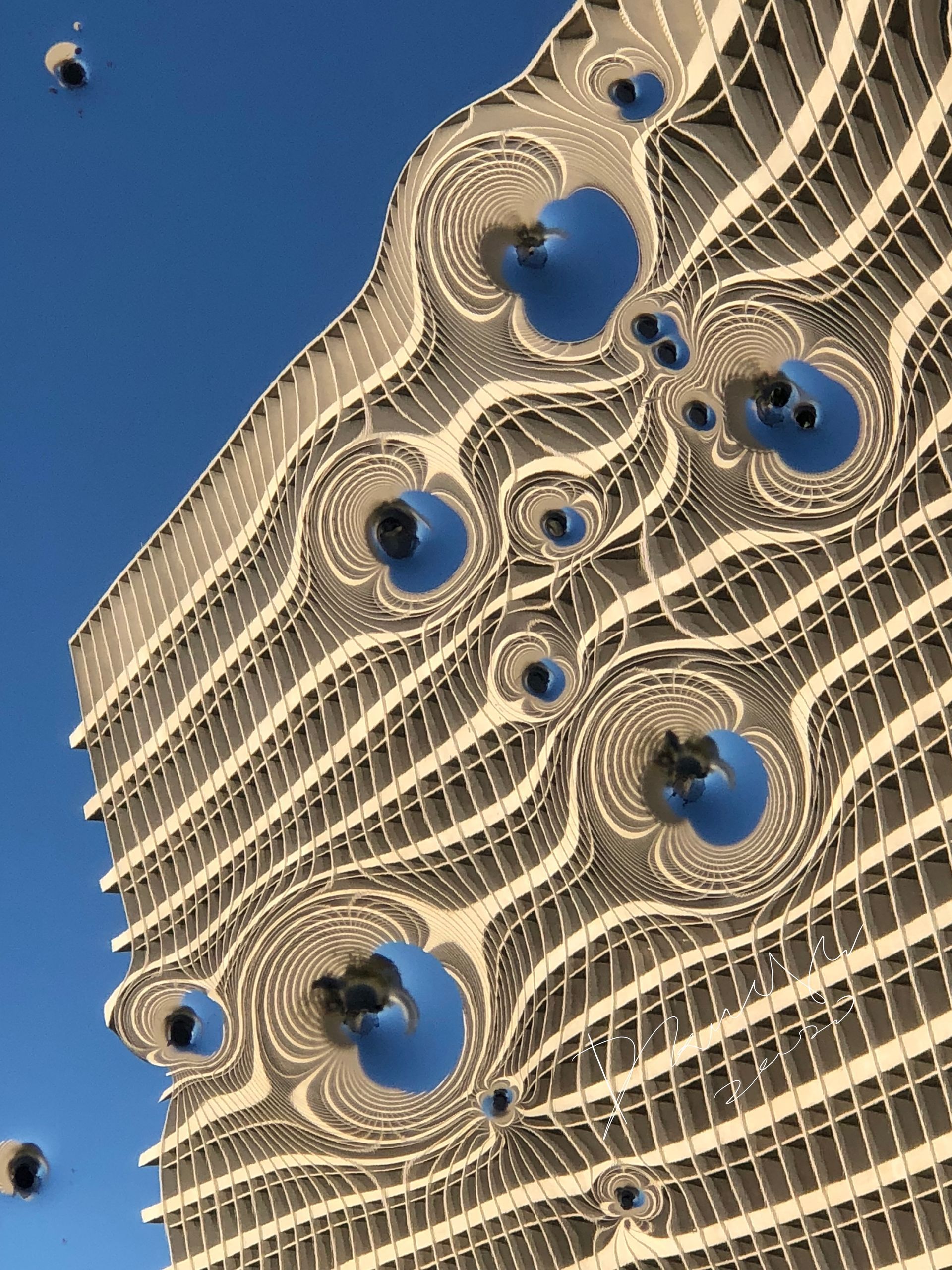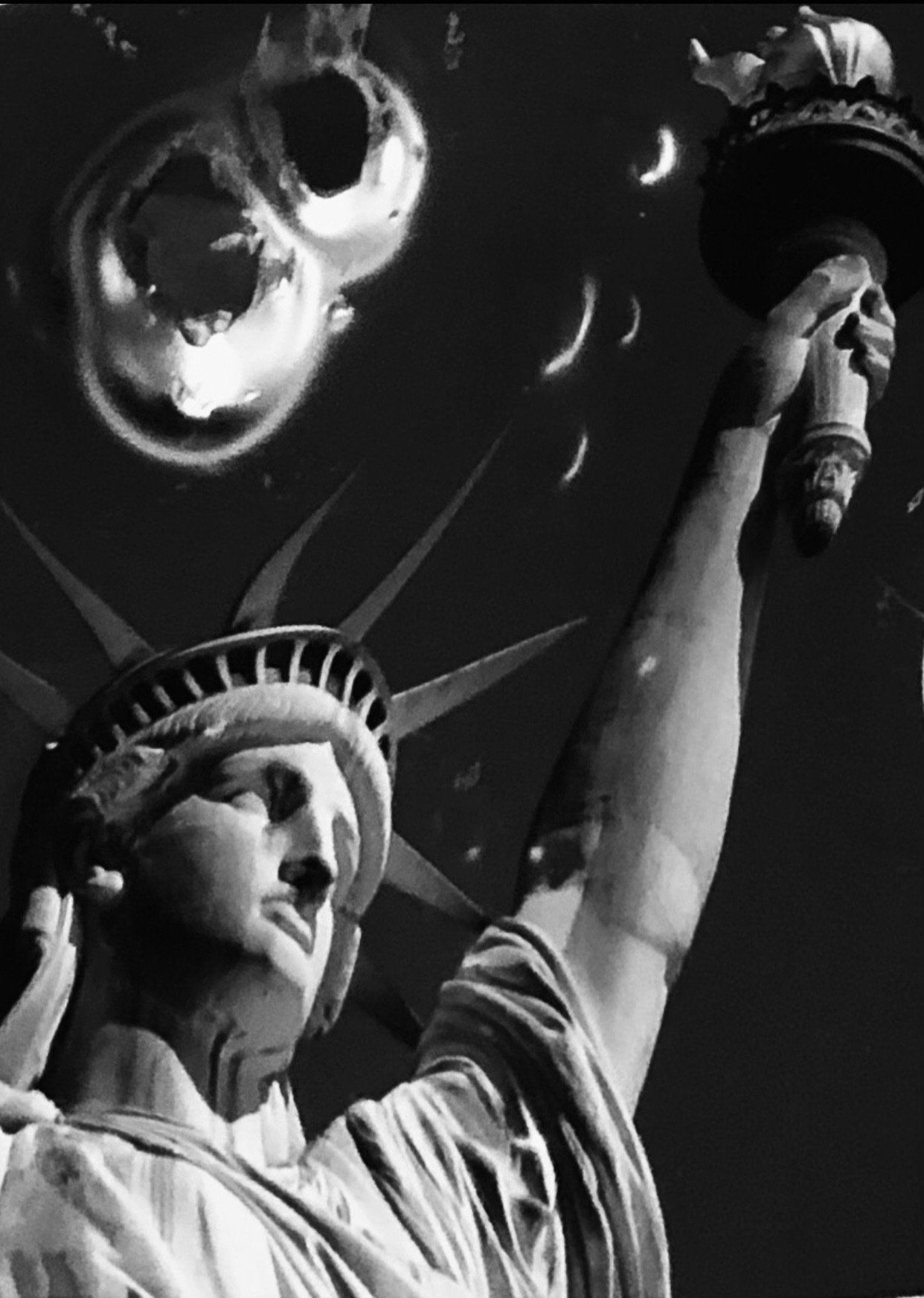Criticism
"VOID"
From Mattress to "Tower of Memory" — An Art Transformation — A Review of the Installation Artwork "Void"
In the realm of contemporary art, works often seek to break the boundaries of traditional aesthetics, exploring deep themes of society, history, faith, and the human experience. The piece "Void" is a large installation artwork with intense visual and conceptual impact, created by the artist MR.J. Through the layering and burning of hundreds of discarded old spring mattresses, the piece explores themes of memory, time, and transience.
The work first engages the viewer with the mattress, a common object in everyday life that is imbued with personal memories. Each mattress carries the dreams, struggles, love, pain, and joys of its former user. In this sense, the mattress becomes a vessel of memory, a "tower of memory," creating an invisible emotional connection between the object and its past inhabitant.

Next, the artist chooses to burn these mattresses, a gesture rich in symbolic meaning. The flames not only represent purification and rebirth but also symbolize the relentless passage of time and the fragility of life. After burning, only the metal skeletons remain, like the bones of past lives, reminding us that all material things will eventually return to nothingness. The exposed metal, covered in rust, forces us to confront the temporary and fleeting nature of material existence.
It is easy to imagine that the "Tower of Void," built from the metal frames of spring mattresses, is not only a visual focal point but also an invitation for dialogue and reflection. It challenges the viewer's expectations of traditional art forms and forces us to confront the marks and consequences of human activity. Displayed in public spaces, this reflection extends beyond the art world, touching on broader social and cultural contexts.
The installation "Void" is a provocative and thought-provoking piece. It not only prompts us to reassess the role of objects in personal and collective memory but also invites us to consider how we interact with the life cycles of these objects. Through this work, the artist successfully transforms an everyday item into a platform for profound artistic dialogue, offering viewers a powerful visual and emotional impact that inspires deep reflection.
10.19.2024 / AAF
"Mirror or Revelation?
— A Critique of the Conceptual Art Piece Mirror. Mirror"
Dking.w’s Mirror. Mirror series, with its unique creative approach and profound philosophical depth, breaks the boundaries of traditional art, presenting a complex interpretation of society and psychology. The mirror, as a symbol of self-awareness, is transformed in the artist’s hands into a vessel of violence and destruction. The breaking of the mirror by the penetration of bullets reveals humanity's loss and conflict in modern society. This destruction not only dismantles individual identity but also symbolizes the collapse of social order.
However, destruction does not necessarily mean an end; it can also be an opportunity for rebirth. The depth of the work lies in its refusal to merely depict violence, instead posing a philosophical question: is redemption possible after destruction? Through the images reflected in the fragments of the shattered mirror, viewers are drawn into a chaotic and disoriented inner world. These fragmented reflections suggest that, in the face of social and psychological collapse, humanity might find new ways of survival and self-recognition through pain and struggle. Much like the final judgment in the Book of Revelation, the artwork seems to offer humanity a chance for self-examination and repentance.
Dking.w explores the intrinsic connections between creation and destruction, pain and redemption. In the turmoil of destruction and conflict, an individual’s understanding of the world and self is continuously shattered and reshaped. This process of rebirth is far from perfect, marked by pain, fractures, and uncertainty. By using mirrors riddled with bullet holes and scars, the artist not only reveals the fragility of society and individuals but also poses a profound question of faith: when faced with immense destructive forces, can humanity achieve some form of rebirth through reflection and redemption?
As an artwork, Dking.w’s Mirror. Mirror is first and foremost a powerful piece of conceptual art. Conceptual art emphasizes the expression of ideas and concepts. Through the radical act of shooting mirrors, Dking.w delves into profound themes of social violence, self-awareness, and human fragility. The piece is not just a visual shock but also a psychological and intellectual impact, guiding viewers to reflect on their relationship with themselves and society. This process embodies the essence of conceptual art: the primacy of thought over form. The artist presents beauty through destruction. This beauty exists not only in the form and composition of the work but also in the audience's psychological response to the shattered mirrors. While bullet holes and cracks are symbols of destruction, the artist imbues them with new aesthetic value, showcasing the coexistence of destruction and beauty. This aesthetic concept challenges traditional definitions of beauty, inspiring viewers to rethink its essence. The reflective nature of the mirror allows the audience to see not just the mirror itself but also their own image and the surrounding environment. This interaction transforms the viewer from a bystander to an integral part of the artwork. The fractures and bullet holes create a visual sense of instability, evoking emotional resonance and psychological reflection. The core of aesthetics lies in evoking emotion and thought, and Dking.w’s work achieves this through its interplay of visual and psychological engagement.
The Mirror. Mirror series, through its integration of conceptual art, installation art, performance art, and sculptural techniques, as well as its innovations in materials and methods, its exploration of violence and beauty, and its deepening of conceptual art and interdisciplinary fusion, offers new possibilities and directions for the development of art. These works not only captivate visually but also provoke deep reflection and discussion on intellectual and psychological levels.In this sense, Mirror. Mirror is a contemporary apocalypse.
Today, we can confidently say: Dking.w’s Mirror. Mirror series is a significant breakthrough in contemporary artistic expression and will become an important landmark in the history of contemporary art development.
07.08.2021/ AAF
Key Points and Interpretations:
1. Dual Significance of the Mirror as a Symbol
- A Medium for Self-Recognition: The mirror serves as a tool for individual self-awareness, reimagined by the artist as a stage for deconstructing and reconstructing the self.
- A Metaphor for Social Reflection: The broken mirror not only symbolizes the destruction of individual identity but also implies the collapse of societal order, prompting viewers to examine themselves and the world around them.
2. The Duality of Destruction and Redemption
- The Poetics of Violence: The act of shattering the mirror with bullets is not merely an act of destruction but also the beginning of a potential rebirth, revealing a deep philosophical exploration.
- Fragments as Possibilities: The fragments of shattered glass, each reflecting different perspectives, suggest that chaos and struggle might lead to new survival methods and redefinitions of self.
3. Innovation and Breakthroughs in Art Forms
- Deepening of Conceptual Art: By using radical techniques, Dking.w emphasizes the expression of ideas over form, challenging traditional views of violence, beauty, and redemption.
- Interdisciplinary Integration: The work combines installation art, performance art, and sculptural techniques, expanding the possibilities of artistic expression.
- Interactive Aesthetics: Through reflective surfaces, viewers see not only the mirror itself but also their own images and surroundings, becoming part of the artwork.
4. Balancing Aesthetics and Philosophy
- Beauty in Destruction: Cracks and bullet holes, while symbols of destruction, are imbued with aesthetic value, challenging conventional definitions of beauty.
- Emotional and Intellectual Resonance: The work evokes psychological discomfort and inspires reflection on the relationship between the individual and society, achieving the essence of aesthetic engagement.
5. Social and Philosophical Dimensions
- A Reflection of Modern Society: The shattered mirror mirrors the contradictions and fragility of the modern era, highlighting the instability of individual identity and social structures.
- The Hope for Redemption: The work’s philosophical core lies in the possibility of finding hope and rebirth amid destruction, much like the ultimate judgment and redemption described in religious narratives.
Dking.w’s Mirror. Mirror series represents a milestone in contemporary art. It transcends traditional forms, prompting discussions on philosophy, emotion, and aesthetics, while encouraging a deeper reflection on the intricate interplay between destruction and creation, and the relationship between the self and society.
The discussion around “Mirror.Mirror “:
1. The Symbolic Meaning of Mirrors
- A Medium for Self-Recognition: Mirrors have long been tools for exploring identity and self-awareness. Dking.w reinterprets the mirror as a stage for deconstruction and reconstruction of the self.
- A Metaphor for Social Reflection: The shattered surface of the mirror not only reflects the individual’s inner struggles but also symbolizes the fragility and imbalance of modern social order. This invites viewers to reflect on both themselves and their environment.
2. The Duality of Violence and Redemption
- The Poetics of Violence: The act of bullets shattering the mirrors signifies destruction but also represents the beginning of rebirth. This poetic interpretation of violence infuses the work with profound philosophical undertones.
- The Potential in Fragments: The shards of the broken mirror, each reflecting different worlds and perspectives, suggest the possibility of discovering new values and viewpoints within destruction. This idea of "finding order in chaos" is deeply inspiring.
3. Challenges to Aesthetics and Form
- Redefining Beauty: Traditional aesthetics emphasize completeness and harmony, while Mirror. Mirror finds beauty in fragmentation, cracks, and instability. Bullet holes and fractures become the core visual language, challenging conventional notions of beauty.
- The Power of Conceptual Art: Dking.w not only subverts visual forms but also challenges the audience on a conceptual level, provoking deep reflections on violence, beauty, and redemption. This focus on expressing ideas embodies the essence of conceptual art.
4. Interaction and Participation
- Viewers as Part of the Work: The reflective nature of the mirrors integrates the viewers’ images into the work, breaking the boundary between creator and observer in traditional art. This sense of participation enhances their understanding of the piece.
- Triggered Psychological Reflection: Observing the shattered mirrors evokes discomfort and a sense of loss, prompting viewers to reflect on their inner selves and their relationship with society.
5. Extended Social and Philosophical Significance
- A Metaphor for Modern Society: The fractures in the work hint at the contradictions and disintegration in modern society, particularly the instability of individual identities and social structures in an era of rapid change.
- Hope for Redemption: Despite the destruction, the work conveys the possibility of rebirth and hope, celebrating human resilience and creativity.
Future Directions for Discussion
- Integration of Technology and Materials: Could the innovative techniques and material choices in the work inspire new directions for artistic expression in the future?
- A Psychological Perspective: Could the "fragmentation" presented in the work dialogue with modern psychological theories or trauma studies?
- Cultural and Contextual Comparisons: How might the symbolic meaning of mirrors in different cultures influence the audience’s interpretation of the work?
The Mirror. Mirror series sparks multi-layered and multi-faceted discussions. Whether from philosophical, social, or aesthetic perspectives, it offers a wealth of interpretive space for contemporary art. It also prompts us to rethink the delicate relationship between destruction and creation, individual and society.


